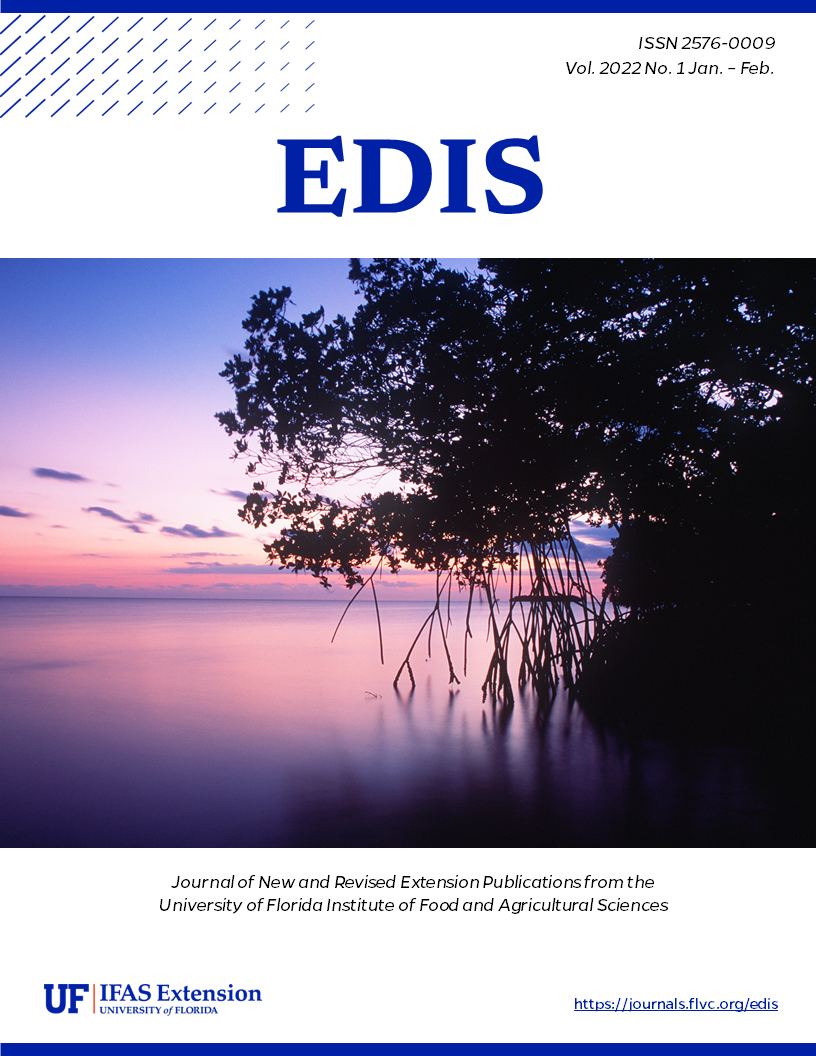Abstract
The use of water is increasing along with Florida's population. Floridians rely on underground freshwater reserves, called aquifers, to supply our diverse water needs (USGS 2016a). In some Florida regions, this underground freshwater reserve can no longer sustain the growing water demands of the population, while also feeding Florida's rivers, springs, and lakes. With periodic droughts, shortages of freshwater may occur. Drought and water shortages in the state have caused urban planners and policy makers to pay closer attention to water use, water supply development, and water resource management. Florida public opinion surveys show that the majority of Floridians rate water as an issue of top importance for the state (UF/IFAS Center for Public Issues Education 2016). A better understanding of Florida's water resources is a first step toward optimizing current freshwater supply use and ensuring adequate water resources in the future.
References
Chesnes, M. 2021. Florida Surpasses Grim Milestone of 1,000 Manatee Deaths in 2021, Starvation a Large Factor. Treasure Coast Newspapers, November 17, 2021. https://www.usatoday.com/story/news/nation/2021/11/17/florida-manatee-deaths-2021-starving-seagrass-loss/8654284002/.
Fernald E.A., and E.D. Purdum (editors). 1998. Water Atlas of Florida. Tallahassee, FL: FSU/ISPA.
Florida Climate Center. 2017a. Precipitation. Tallahassee, FL: Florida Climate Center. http://climatecenter.fsu.edu/products-services/data/statewide-averages/precipitation.
Florida Climate Center. 2017b. Hurricanes. Tallahassee, FL: Florida Climate Center. http://climatecenter.fsu.edu/topics/hurricanes.
Florida Department of Environmental Protection (FDEP). 2015. Aquifers. Tallahassee, FL: FDEP. https://prodlamp.dep.state.fl.us/swapp/Welcome/links/aquifers_v.
Florida Department of Environmental Protection (FDEP). 2016. Final Integrated Water Quality Assessment for Florida: 2016 Section 303(d), 305(b), and 314 Report and Listing Update. Tallahassee, FL: FDEP.
Florida Fish and Wildlife Conservation Commission (FFWCC). 2021. Manatee Mortality Statistics. Tallahassee, FL: FFWC. https://myfwc.com/research/manatee/rescue-mortality-response/statistics/mortality/.
Irmak S., and D.Z. Haman. 2021. Evapotranspiration: Potential or Reference? EDIS #AE256. Gainesville, FL: UF/IFAS Extension. https://edis.ifas.ufl.edu/ae256.
Knight, R. 2017. Florida: Land of 1,000 Springs. High Springs, FL: Florida Springs Institute. https://floridasprings.org/.
Marella, R.L., and M.P. Berndt. 2005. Water Withdrawals and Trends from the Floridan Aquifer System in the Southeastern United States, 1950–2000. Reston, VA: US Geological Survey (USGS). https://doi.org/10.3133/cir1278
National Oceanic and Atmospheric Association, National Centers for Environmental Information (NOAA/NCEI). 2017. National Centers for Environmental Information, Climate at a Glance: U.S. Time Series. Asheville, NC: NOAA/NCEI. http://www.ncdc.noaa.gov/cag/
National Oceanic and Atmospheric Association, National Centers for Environmental Information (NOAA/NCEI). 2014. Extremes in U.S. Climate. Asheville, NC: NOAA/NCEI. https://www.ncdc.noaa.gov/climate-monitoring/.

